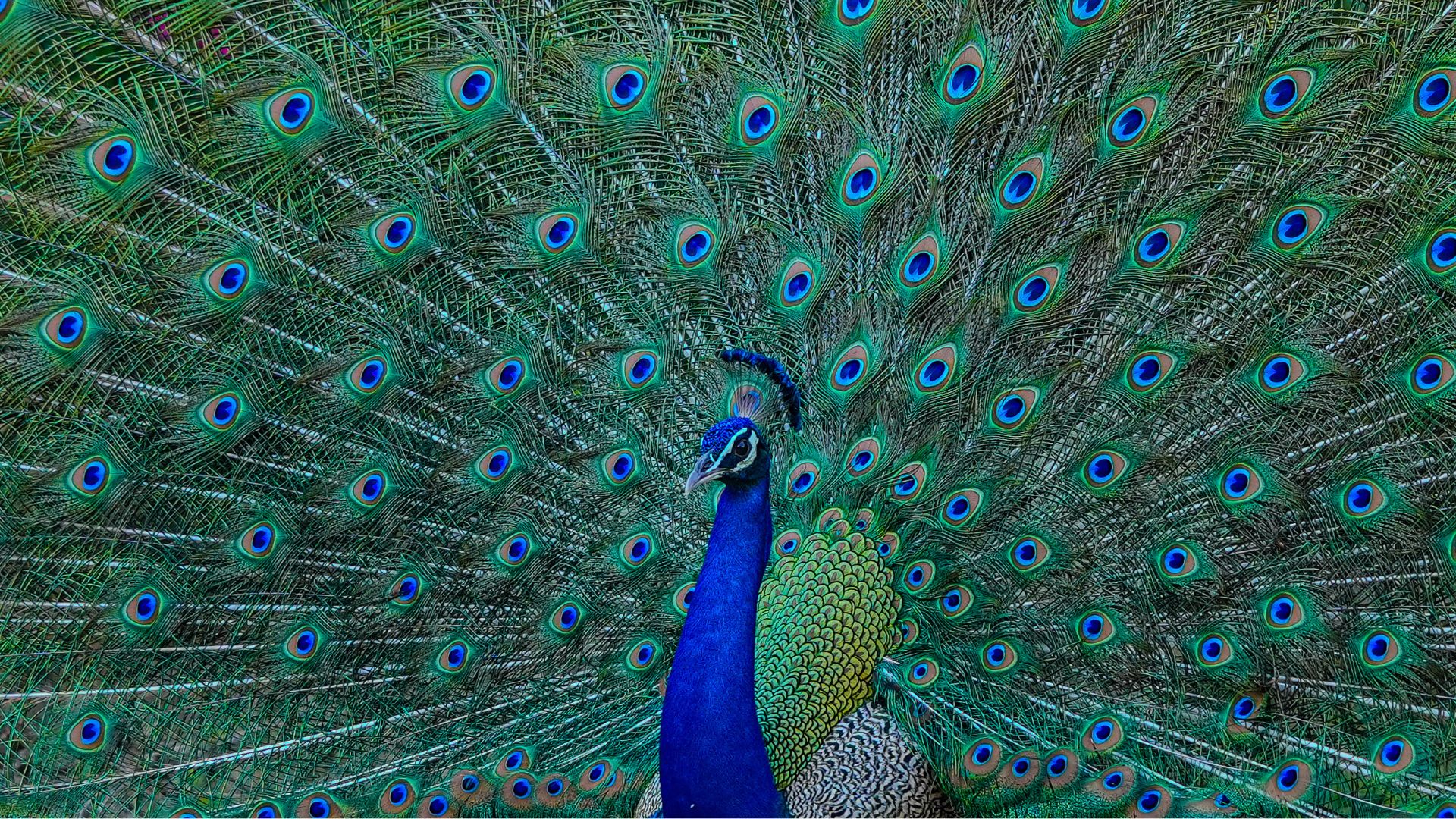Scientists have concluded that peacocks’ tail feathers are capable of emitting narrow beams of light. A team highlighted that the colored tail feathers include tiny reflective structures that can amplify light into a laser beam.
Researchers from Florida Polytechnic University and Youngstown State University explored such structures that may emit a very different signature glow after applying a special dye to multiple areas on a peacock’s tail.
They revealed that feathers can emit two distinct frequencies of laser light from multiple regions across their colored eyespots.
First example of biolaser cavity
Researchers are claiming this as the first example of biolaser cavity within the animal kingdom.
The research team pointed out that after dyeing the feathers and energizing them with an external light source, researchers discovered they emitted narrow beams of yellow-green laser light.
The study investigated that the light-emissive properties of dye-infused barbules from Indian Peafowl (Pavo cristatus) tail feathers at high intensities pumped at 532nm.
Highly conserved set of laser wavelengths was observed
Researchers revealed that the dye-infused barbules were prepared by repeatedly wetting the eyespot with dye solution and allowing it to dry. While wet, and after wet/dry cycling, across multiple parts of the same feather as well as across different feather samples, a highly conserved set of laser wavelengths was observed.
The team stressed that the feather was found to require multiple staining cycles before laser emission was observed.
“The eyespot of a dye-doped peafowl tail feather was found to emit laser light from multiple structural color regions. Regions where the visible reflection bands were outside of the gain region of the dye were also found to emit laser light in some locations,” said researchers in the study.
“The greatest laser intensity relative to the broad emission curve was found to be emitted from the green color region.”
Precise microstructures responsible for the lasing
Researchers believe that the study’s findings could be an elegant example of how complex biological structures can support the generation of coherent light. Although, the study does not identify the exact microstructures that are doing the lasing.
After getting peacock feathers, researchers cut away any excess lengths of barbs and mounted the feathers on an absorptive substrate. They then infused the feathers with common dyes by pipetting the dye solution directly onto them and letting them dry.
The feathers were stained multiple times in some cases. Then, they pumped the samples with pulses of light and measured any resulting emissions according to the details of the research published.
The authors were unable to identify the precise microstructures responsible for the lasing; it does not appear to be due to the keratin-coated melatonin rods. Co-author Nathan Dawson of Florida Polytechnic University suggested to Science that protein granules or similar small structures inside the feathers might function as a laser cavity, reported Ars Technica.
Some experts claimed that looking for laser light in biomaterials could help identify arrays of regular microstructures within them. In medicine, for example, certain foreign objects—viruses with distinct geometric shapes, perhaps—could be classified and identified based on their ability to be lasers.
The study wad published in the journal Scientific Reports.
